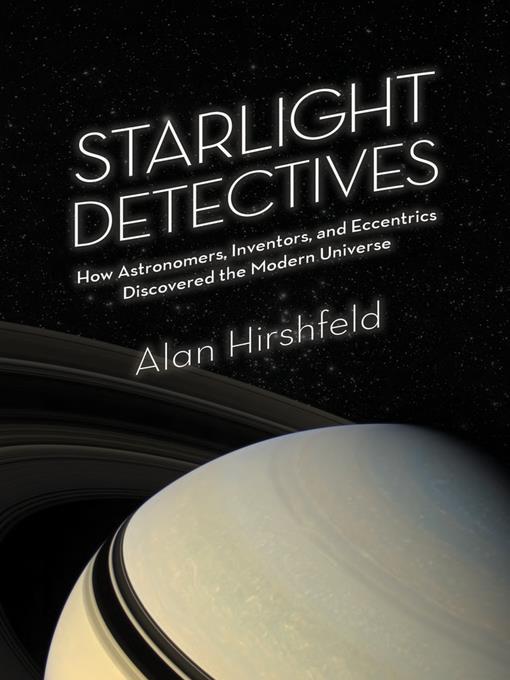
Starlight Detectives
How Astronomers, Inventors, and Eccentrics Discovered the Modern Universe
- اطلاعات
- نقد و بررسی
- دیدگاه کاربران
نقد و بررسی

Starred review from June 1, 2014
Photography, not computers, ushered in modern astronomy. Here, its bumpy evolution is in the expert hands of Harvard College Observatory associate Hirshfeld (Physics/Univ. of Mass. Dartmouth; Eureka Man: The Life and Legacy of Archimedes, 2009, etc.).In this highly illuminating history, the author "explores the decades-long bridge of innovation that transformed Victorian-era visual astronomy into the scientific discipline that is observational astrophysics." Although revolutionary when it appeared around 1600, the telescope is simply an amazing extension of the eye, not designed to function in dim lighting or make a permanent record. The daguerreotype dazzled the world in 1839, and an early photograph of the moon, unimpressive by modern standards, created a sensation in 1851, but stars and planets remained off limits until film sensitivity vastly increased with the dry plate in the 1870s. Equally essential to astronomers was the simultaneous maturing of the spectroscope. Splitting light into innumerable hues and lines, it allowed not only the discovery that stars were similar to the sun, but also the identification of their precise chemical makeup and movements. By the 1880s, "what had been a noisome, exasperating art had become a predictable mainstream technology that would eventually recast the telescope as an adjunct of the camera" and spectroscope. Until that decade, Hirshfeld emphasizes brilliant but now-unknown amateurs (Andrew Common, William Bond, William Huggins, Isaac Roberts) who fell in love with astronomy and had no objection to the clunky new technology. Afterward, they were replaced by academically trained but equally obsessive scientists who oversaw the creation of the massive 20th-century observatories (George Ellery Hale) and revealed an unimaginably immense, expanding universe (Edwin Hubble, Harlow Shapley).A delightful, detailed chronicle of great men (and a rare woman) whose fascination with the night sky and the technology necessary to study it led to today's dramatic discoveries.
COPYRIGHT(2014) Kirkus Reviews, ALL RIGHTS RESERVED.

June 15, 2014
Hirshfeld (physics, Univ. of Massachusetts-Dartmouth; The Electric Life of Michael Faraday) traces the development of modern astronomy from early 19th-century observational astronomy through the birth of astrophysics, culminating in Edwin Hubble's demonstration that we appear to live in an expanding universe. This scientific evolution was propelled, the author explains, by significant improvements in three key technologies: photography, spectrometry, and telescopy. Of course, many of the technical advances were developed by academic astronomers through the process of global scholarly competition. But others owe their genesis to physicists, chemists, scientific instrument designers, politicians, and the once influential community of hobbyist astronomers. Sadly, explains Hirshfeld, the intellectual complexity of modern astrophysics, the use of ever larger telescopes and increasingly expensive equipment, and the need for remote, pristine observing sites have significantly reduced the chances of amateurs making noteworthy contributions in many (but not all) areas of astronomical research. Given the chronological and geographic span of this book, readers will appreciate the time line and glossary of names the author helpfully provides. VERDICT Although the story fizzles toward the end, this is a well-written and enjoyable title for astronomers--professional and amateur alike--as well as science history fans.--Nancy R. Curtis, Univ. of Maine Lib., Orono
Copyright 2014 Library Journal, LLC Used with permission.




دیدگاه کاربران